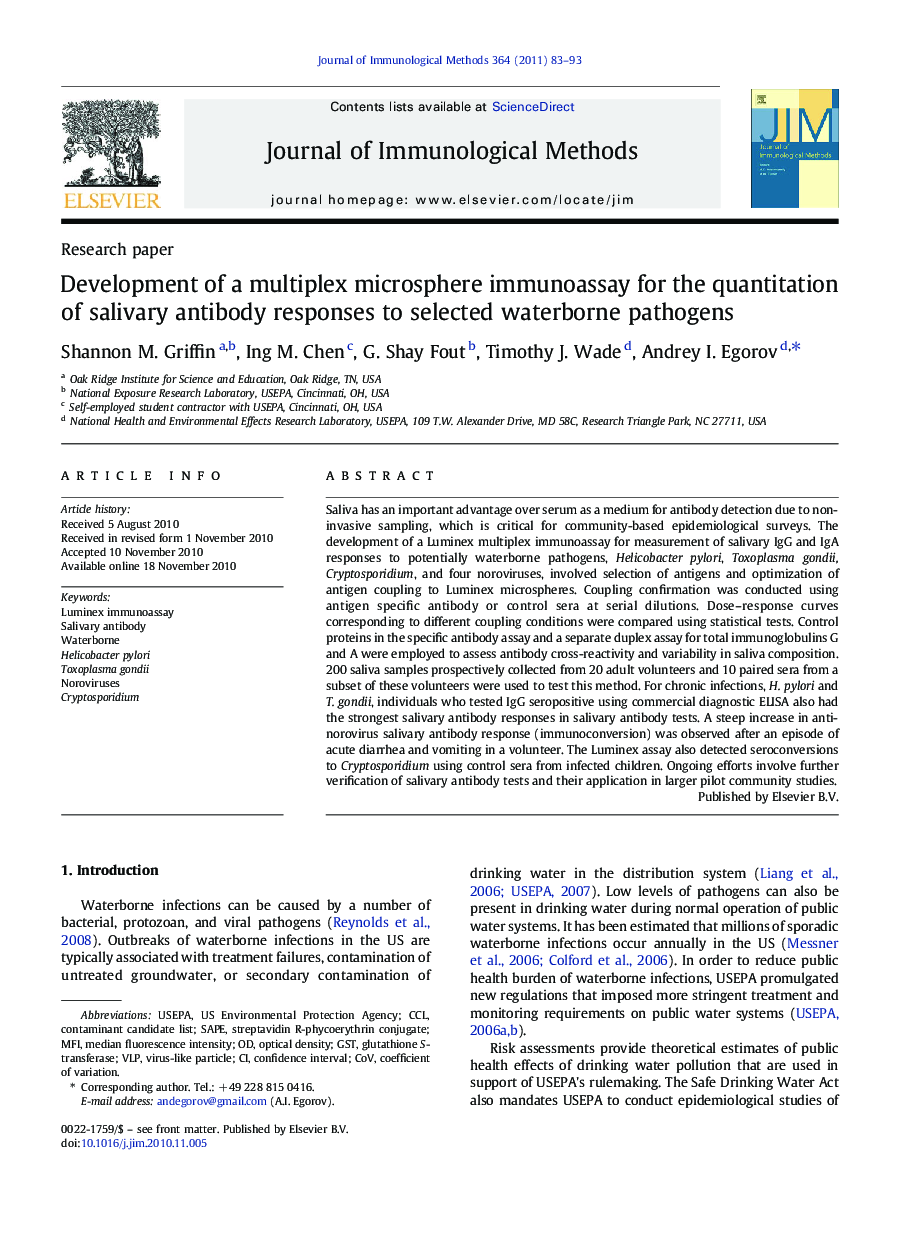| Article ID | Journal | Published Year | Pages | File Type |
|---|---|---|---|---|
| 2088486 | Journal of Immunological Methods | 2011 | 11 Pages |
Saliva has an important advantage over serum as a medium for antibody detection due to non-invasive sampling, which is critical for community-based epidemiological surveys. The development of a Luminex multiplex immunoassay for measurement of salivary IgG and IgA responses to potentially waterborne pathogens, Helicobacter pylori, Toxoplasma gondii, Cryptosporidium, and four noroviruses, involved selection of antigens and optimization of antigen coupling to Luminex microspheres. Coupling confirmation was conducted using antigen specific antibody or control sera at serial dilutions. Dose–response curves corresponding to different coupling conditions were compared using statistical tests. Control proteins in the specific antibody assay and a separate duplex assay for total immunoglobulins G and A were employed to assess antibody cross-reactivity and variability in saliva composition. 200 saliva samples prospectively collected from 20 adult volunteers and 10 paired sera from a subset of these volunteers were used to test this method. For chronic infections, H. pylori and T. gondii, individuals who tested IgG seropositive using commercial diagnostic ELISA also had the strongest salivary antibody responses in salivary antibody tests. A steep increase in anti-norovirus salivary antibody response (immunoconversion) was observed after an episode of acute diarrhea and vomiting in a volunteer. The Luminex assay also detected seroconversions to Cryptosporidium using control sera from infected children. Ongoing efforts involve further verification of salivary antibody tests and their application in larger pilot community studies.
